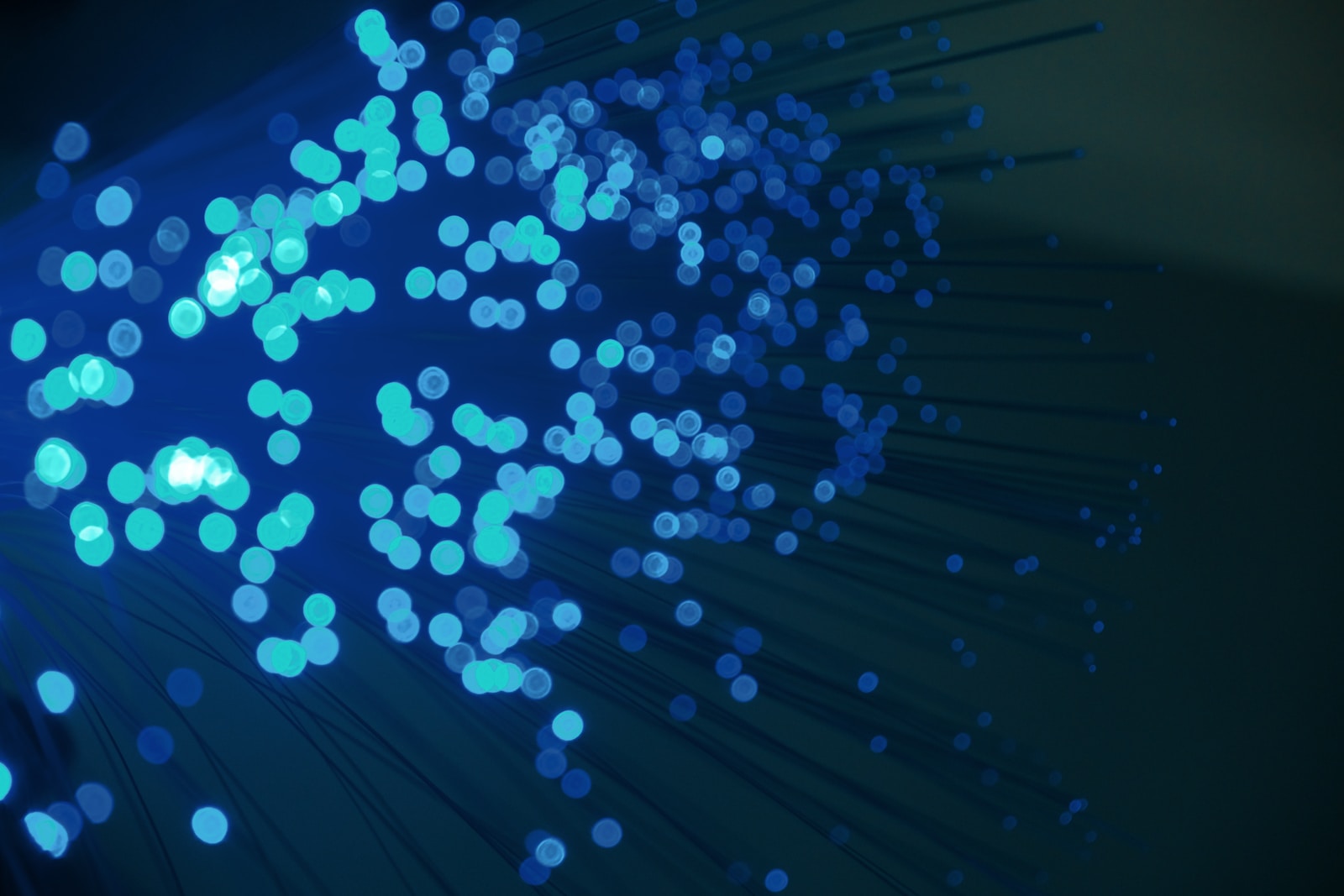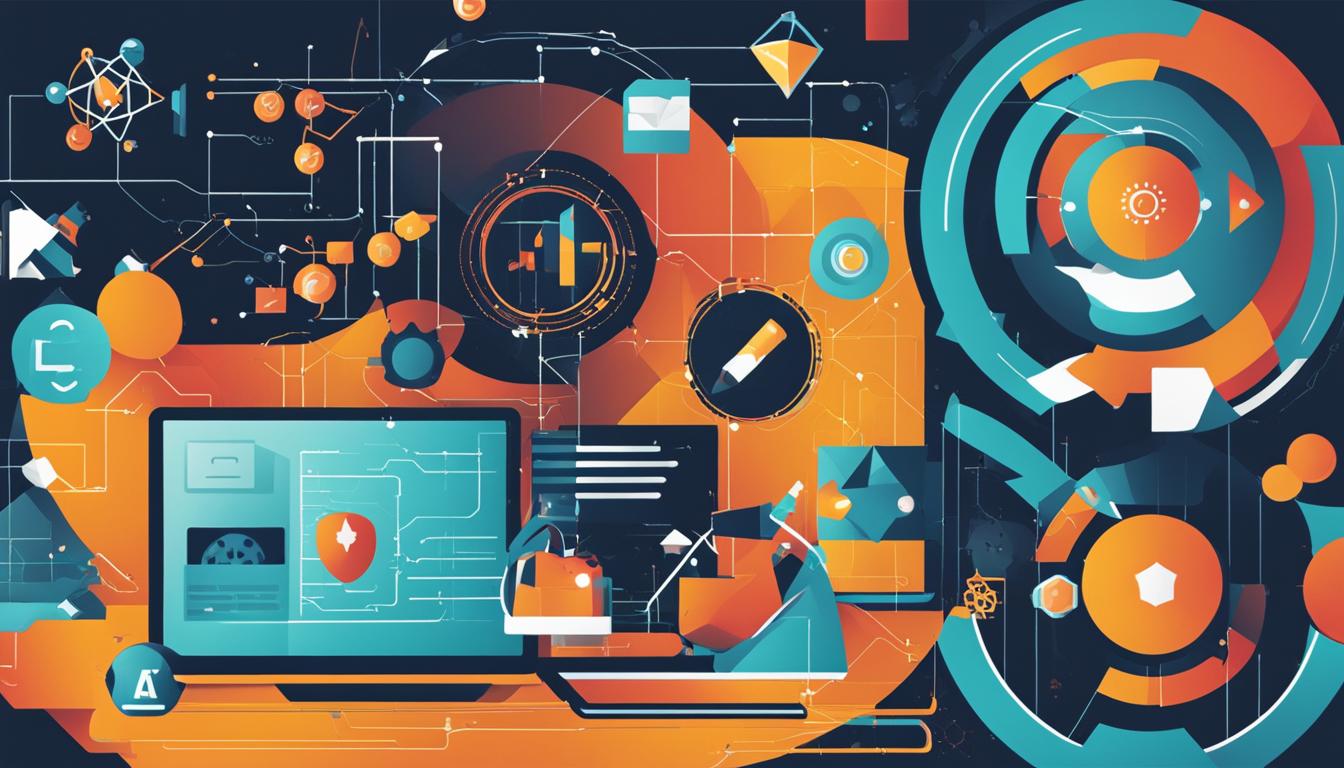Introduction: A Quick Dip into the AI Pool
Unfolding the Enigma of Artificial Intelligence
Artificial Intelligence, often abbreviated to its much cooler sounding initialism ‘AI’, is no longer the stuff of science fiction. It’s as real as the device you’re reading this article on and has permeated our lives in ways we often take for granted. At its crux, AI is about creating machines that mimic human intelligence.
I know – it sounds like we’re setting ourselves up for a Terminator-style future but worry not, Skynet isn’t self-aware… yet. These smart machines don’t just pop out of a factory ready to cater to our needs though.
The key to their intelligence lies in their ability to learn and adapt over time. From voice assistants that understand your idiosyncratic speech patterns, to autonomous vehicles that navigate complex traffic systems – AI is all about algorithms that learn from experience.
The Two Cool Kids on The Block: Swarm Intelligence and Neural Networks
Now within this expansive world of AI, there are two particularly fascinating concepts that have been causing quite a stir among tech enthusiasts – Swarm Intelligence (SI) and Neural Networks (NN). Often seen as rivals vying for supremacy in problem-solving tasks, these two approaches represent differing philosophies in how we can build intelligent systems. Imagine SI as nature’s way of solving complex problems.
Picture an ant colony working together seamlessly or birds flying in perfect sync; that’s SI at work. On the other side of the coin, Neural Networks draw inspiration from our own brains’ intricate workings – they are essentially digital replicas of how neurons connect and interact within our grey matter.
Intriguing stuff right? Well buckle up because we’re just getting started!
Understanding the Buzz: Swarm Intelligence
The Humble Beginnings: Defining Swarm Intelligence
What exactly is this swarm intelligence we speak of? To put it simply, swarm intelligence is a remarkable form of collective behavior displayed by decentralized, self-organized systems. The term itself conjures dramatic images of countless bees or ants moving in perfect harmony, doesn’t it?
Well, that’s not far from reality. The concept originated from the study of colonies – insects like ants, bees or termites to be precise – and how they operate without any central command, yet achieve the intricate process of nest building, food foraging and defense among other things.
To delve a little deeper – what sets swarm intelligence apart is that there’s no leader in these systems. Instead, each individual (or agent as they are also called) operates on simple rules and their interactions with one another result in the complex behaviour we see as an outsider.
It’s like each ant or bee holds a tiny piece of information that contributes to the bigger picture. So you see, it’s not about having one brainy boss but about everyone chipping in their two cents’ worth!
A picnic with Mother Nature: Real-world examples
Imagine you’re enjoying a delightful picnic on one sunny afternoon when you notice an interesting spectacle – a line of ants marching towards your sandwich crumbs! That right there is swarm intelligence at work in its simplest form. Ants use pheromones to communicate with each other about food locations or danger zones which creates trails leading fellow ants towards food sources – all without any need for GPS!
Swarm intelligence isn’t just confined to creepy crawlies though; schools of fish maneuvering around predators and flocks of birds migrating across continents also employ similar principles! In fact, even our human society displays forms of swarm intelligence – think about how traffic flows or how the stock market operates!
The Clockwork behind the Chaos: Inner Workings of a Swarm
The workings of swarm intelligence can appear chaotic to an untrained eye, but there’s a method to this madness — more like algorithms! Each agent in a swarm behaves based on local information it acquires from its environment and neighboring agents. These relatively simple interactions between agents lead to complex emergent behaviors that accomplish specific tasks.
Whether it’s finding the shortest route to food or coordinating mass migration, these tasks are achieved efficiently through collective intelligence. What’s fascinating is that mistakes or loss of individuals hardly affect a swarm’s overall performance.
A lost ant won’t disrupt the colony’s food foraging mission, neither will one missing bird disrupt the flock’s intricate aerial ballet. This robustness and resilience are what make swarms not just interesting but also inspiring for problem-solving in artificial intelligence and robotics.
Diving Deeper into the Hive Mind: Components and Characteristics of Swarm Intelligence
An Army of One: The Key Players in a Swarm
You’ve probably seen those National Geographic specials where thousands of ants band together to carry a chunk of food five times their size back to the anthill. An impressive sight, right? What you’re witnessing here is an essential element of swarm intelligence at play—the role of individual agents.
Each ant, bird or bee in a swarm carries out simple tasks that seem insignificant on their own but when combined with the efforts of hundreds or thousands (or even millions) more, they achieve complex objectives. In artificial swarm intelligence, these agents are typically computer algorithms working in tandem towards achieving a common goal.
Much like our ant bringing home dinner one tiny bit at a time, these AI agents perform simple operations that contribute to the resolution of more complex tasks. They don’t need any guidance because they follow pre-set rules which guide how they interact with their environment.
Whispers within the Hive: Interaction Among Agents
So we’ve established that each agent within a swarm has its own role to play – but how do these lone soldiers actually form an army? This is where communication comes into play. Through interaction and communication, our individual agents share information with each other about what they’ve learned or discovered while carrying out their tasks.
This sharing happens on numerous levels. For example, let’s look at our lovely ants once more (quite fascinating little creatures, aren’t they?).
When an ant finds food it leaves behind pheromone trails for other ants to follow – that’s some beautiful natural messaging system happening right there! In AI terms this could be as simple as one algorithm passing on data or results it has calculated to another algorithm.
Deciding the Swarm Way: Consensus vs Conflict
Let’s face it. We humans don’t always agree on everything, and when we do, it’s often after lengthy debates or voting processes. Surprisingly, consensus within a swarm is much simpler and yet equally effective.
In the swarm world, decisions are made based on the principle of self-organization. This means agents evaluate their own and other agents’ information to make individual decisions which in turn influence the whole group’s direction or decision.
No need for a lengthy debate in Parliament here! However, conflicts do sometimes arise when agents have different pieces of information or conflicting goals.
How does a swarm handle this? Beautifully!
They often use some form of democratic process where the majority rules – so if more ants follow one pheromone trail than another, then that’s where dinner is! These interactions lead to what we call ’emergent behaviour’, resulting in collective intelligence that surpasses what any individual agent could achieve alone.
Switching Gears to Neural Networks: Our Brain, the Original Computer
A Kaleidoscope of Connections: Unraveling Neural Networks
Dare we venture into the labyrinthine world of neural networks? Fear not, my intrepid reader, for our journey is sure to be as fascinating as it is illuminating.
Neural networks are essentially computing systems fashioned after our brain’s neural structure. They’re ingenious mathematical models designed by computer scientists who probably thought, “Hey, the human brain’s pretty nifty—let’s make a computer do that!”
In a nutshell, a neural network takes in information through input nodes (just like how our senses gather data), navigates through hidden layers of connections and algorithms (akin to our brain’s processing), and finally delivers an output (much like an action or decision we make). These networks learn from experience—a characteristic called machine learning—and can enhance their performance over time.
Neural Networks in Nooks and Crannies: Real-world Applications
Let’s turn now to some real-world applications of these cerebral systems. It’s quite possible that as you’re reading this very sentence on your smartphone or laptop, you’re benefitting from the marvels of neural networks. Ever used predictive text?
That’s right—an underlying neural network is predicting possible word sequences based on your past typing behavior. Ever wondered how social media platforms recommend friends or how streaming services suggest shows you might like?
Well, they too harbor networks of artificial neurons working behind their glitzy interfaces. From medical diagnostics to financial forecasting, from self-driving cars to voice recognition software—neural networks have permeated nearly every sphere of modern life.
The Eccentricities Behind Extrapolation: How Neural Networks Work
Now let’s examine the magic behind those layers. Think Harry Potter meets The Matrix!
Each node in a neural network is like a mini decision-making machine. It takes in data, applies specific rules (also known as weights), and decides whether to pass the information along.
In a neural network, learning occurs by adjusting these weights based on the difference between the expected output and the actual output—this is known as backpropagation. It’s akin to finding your way through a maze—sometimes you hit a dead end and have to backtrack until you find the right path.
The process of training a neural network involves feeding it with tons of data so that it can refine its weights and improve its predictions. This vast sea of numbers might seem daunting, but to our trusty neural networks, it’s just another day at the office—dealing with complexity one layer at a time.
The Grand Design: Unveiling the Neurons
Like a well-structured building, neural networks too have their foundation in small, intricate building blocks called neurons. These are essentially computational units that take in input, process it and generate output. Hypothetically speaking, think of neurons as little elves working tirelessly to make the magic of AI happen.
The neuron receives inputs through connections termed as synapses; these are akin to incoming phone calls carrying information. Each of these calls is weighed for importance (synaptic weight).
The neuron processes this information and if the total signal exceeds a certain limit (the activation threshold), it sends out an output signal. But don’t be fooled by this simplicity; when millions of them work together, they achieve staggering levels of complexity.
Like a Cake with Many Layers: Decoding Input, Hidden & Output Layers
Now that we’ve seen the micro-level workers – neurons – let’s understand how they collaborate on a larger scale. A neural network is organized into layers – not unlike different floors on a skyscraper or layers in a scrumptious cake.
Broadly speaking, these layers can be categorized into three types – input layer (first layer), hidden layers (middle layers) and output layer (final layer). The input layer is where all data enters the system – consider it like reception at an office block or perhaps the base layer of our delicious cake!
Hidden layers are nestled between input and output layers – they perform complex computations and transformations on the data received from preceding inputs before passing them onto subsequent ones – like various flavours sandwiched between our cake slices! Comes the output – this is where we see results after all processing takes place – just like enjoying that last bite filled with overwhelming flavors!
Teaching an Old Dog New Tricks: Training Neural Networks
Let’s now delve into how these networks learn and adapt. The learning process in a neural network is iterative and involves tweaking the aforementioned synaptic weights based on the error in output – much like a potter constantly shaping and reshaping his clay on the spinning wheel until it’s just right or, if you prefer, like fine-tuning a recipe until it tastes absolutely perfect.
The training process takes place through an algorithm called ‘backpropagation’. In simple terms, it evaluates how far off our network’s output is from the expected result and traces back this error through all the layers adjusting their synaptic weights slightly.
This process repeats itself many times over (iterations), reducing error with each pass – a learning journey from being an AI novice to becoming an expert! One can imagine how demanding this procedure can become when dealing with networks containing millions of neurons – but hey, no one said advanced AI was going to be easy!
The Showdown: Problem-Solving Prowess – Which One Outperforms?
Stepping into the first round of this heavyweight bout, let’s consider how each contender fares in the problem-solving arena. Swarm intelligence, with its decentralized approach and plethora of independent agents, excels in tasks that require multi-dimensional solutions or parallel processing.
Think of complex routing problems like GPS navigation or supply chain management where multiple routes and variables exist – our dear swarm dances around these conundrums with elegance and efficiency. Conversely, neural networks shine when it comes to predictive analytics, image recognition, and data classification.
These digital wizards work their magic by detecting patterns hidden deep within data ocean. They are rather skilled at making sense out of chaos – a veritable Detective Sherlock Holmes for your datasets!
But remember Watson(s), these two titans have their own areas of strength. It’s not quite a one-size-fits-all situation.
Flexibility Face-Off: Adapting to Changes
Moving on to the next round – flexibility. A trait paramount in today’s ever-evolving technological landscape!
In this regard, our swarm intelligence takes the gold medal home. The essence of swarm intelligence is adaptation; ant colonies don’t fail when their queen passes away or if few ants get lost on their way home from a picnic raid because the entire system is built around resilience against changes.
On the other hand, neural networks can be somewhat rigid once trained. Modifying them often requires retraining that might need another cup (or five) of coffee to get through!
This isn’t to say they’re complete change-phobes; certain types such as Recurrent Neural Networks (RNNs) do have short-term memory of sorts. But overall, when it comes to rolling with the punches, swarm intelligence gets the point.
Complexity Comparison: Simplicity vs Sophistication
Let’s talk about complexity – simplicity versus sophistication if you will. Swarm intelligence is inherently simple; each individual agent follows a basic set of rules and voila! We have emergent intelligent behavior.
It’s like a group of kindergarteners spontaneously forming an orderly lunch queue (a miracle indeed!). In contrast, neural networks are sophisticated beasts that require a deep understanding of not only how they function but also linear algebra, calculus and statistics for designing and training them effectively.
Imagine trying to teach those same kindergarteners quantum physics – tricky, isn’t it? So in terms of user-friendliness or ease-of-use particularly for beginners, swarm intelligence seems more inviting with its less complicated approach.
Special Cases where Swarms meet Neurons: Hybrid Models – When Two Worlds Collide
In the dynamic world of AI, it’s not uncommon to see elements from diverse fields interweave to create something truly extraordinary. Such is the case with hybrid models that amalgamate Swarm Intelligence and Neural Networks.
These models leverage the strengths of both worlds, harnessing the adaptability and decentralized decision-making prowess of swarms with the computing power and learning capabilities of neural networks. Take Swarm Neural Network (SwarmNet) as an example.
This model uses a swarm-based approach to optimize the weights in a neural network, enhancing its efficiency while minimizing errors. The swarm agents essentially act like messengers ferrying information between different neurons, thereby speeding up computations and enhancing overall performance.
Conclusion: The Convergence of Wisdom
The mesmerizing world of artificial intelligence continues to amaze us all with its intricacies and capabilities. From mimicking natural phenomena in swarm intelligence to replicating our brain’s architecture through neural networks, we’ve only just scratched the surface of what’s possible.
With hybrid models bringing together these enthralling arenas, we look forward to a future where man-made technology mirrors nature’s sophistication more closely than ever before. As we continue on this technological odyssey, let’s embrace these advancements that promise not only enhanced efficiency but also a deeper understanding of our own natural world.



